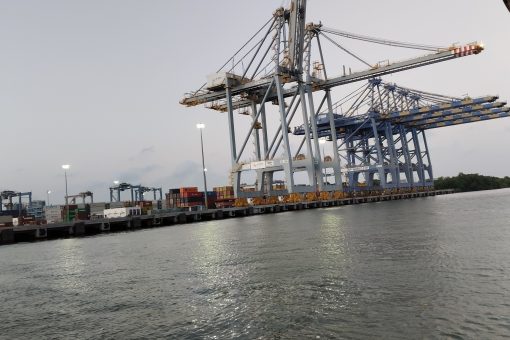
A Blueprint for Central Banking and Public Finance Reform in India
Introduction:
India’s economic resilience demands bold, decisive reforms in central banking and public finance. These measures aim to reduce interest burdens, strengthen the rupee, and drive long-term growth while safeguarding national sovereignty.
1. Converting Dated Securities into Treasury Bills
The Reserve Bank of India (RBI), in consultation with the Ministry of Economic Affairs, can invoke exceptional provisions to:
– Convert the RBI’s holdings of dated central government securities into short-term Treasury Bills (7–364 days) at a rate of ₹1.25 lakh crores per week, bypassing primary dealers and markets through a one-time arrangement.
– Proposed Interest Rates for Treasury Bills:
2.52% for 364 Days
1.62% for 182 Days
0.99% for 91 Days
0.45% for 46 Days
0.23% for 7–14 Days
Impact: This conversion would significantly reduce the government’s interest outgo while offering flexibility in Open Market Operations (OMOs).
2. Why This Reform is Urgent
This proposal arises due to:
– A drop in the Wholesale Price Index (WPI) and the risk of deflation over the next six months.
– Geopolitical tensions at India’s borders.
– The need to safeguard the Indian Rupee from external pressures.
– India’s foreign currency repayment obligations of ₹6,18,295.76 crores.
Goal:
A calibrated approach will reduce the revenue deficit and allow savings to be redirected toward capital expenditure and development.
3. A Treasury Bill-Centric OMO Framework
Once securities are converted, the RBI should:
– Conduct OMOs exclusively in Treasury Bills, not dated securities
– Offer buy/sell operations at state capitals between 10 a.m. and 4 p.m.
– Conduct special OMO sessions for primary dealers and commercial banks between 4 p.m. and 5 p.m.
– Fix a single OMO rate to create a simplified market structure.
4. Benefits to Savers and Markets
– Savers will continue to earn 8.8–9% returns from safe instruments.
– The government saves massively on interest outgo, both in the current and future years.
– Domestic savings strengthen the rupee and support India’s 15-year growth plan (till 2040) for infrastructure and housing.
5. Reforming Fixed Deposit Policies
To align with RBI’s monetary policy
– No fixed deposit should exceed 364 days or offer rates above the announced Bank Rate.
– All fixed deposits to be treated as unsecured deposits.
– Single deposits above ₹100 crores from any entity should not be accepted.
Shift to Securities:Large depositors should be encouraged to use Demat or Securities Ledger Accounts (SGLs) and invest in central or state government securities for better risk management and transparency.
6. Deep Discount Bonds
A Game-Changer – To mobilize long-term capital:
– The RBI should allow commercial banks to issue deep discount bonds (DDBs) — not coupon-bearing bonds — up to ₹15 lakh crores.
– Rate discovery will occur via daily auctions with primary dealers.
– Bonds should be listed on domestic markets (e.g., GIFT City) and overseas platforms to encourage rupee-based transactions.
– These bonds should be included in RBI’s OMO framework to enhance liquidity.
7. Moving Away from ECBs
– Ban External Commercial Borrowings (ECBs) in their current form for banks and financial institutions.
– Encourage corporates to raise funds via rupee-denominated DDBs instead.
– Use RBI liquidity to retire ECBs early, cutting foreign currency outflows and keeping profits and taxes within India.
8. Creating Long-Term Investment Banks
The RBI should foster at least nine dedicated investment banks, each with ₹90,000 crores in equity.
– These banks could leverage 4x their equity (₹3.6 lakh crores) to fund credible infrastructure and commercial projects.
– This would unlock ₹27 lakh crores for physical asset creation, boosting GDP growth to 8–9.2%.
Job Creation:
Approximately 2.75 crore jobs will be generated across all sectors and age groups (19–70 years).
9. Broader Economic Impact
– Lending rates (5–25 years) will stabilize between 7.8–9.9%, reducing NPAs caused by high-interest loans.
– India’s efficiency rankings (WEF) will improve.
– Agriculture, manufacturing, and services will experience a surge in productivity and competitiveness.
10. Key Takeaways
– Fixed Deposit policies need urgent reform.
– Multilateral debts must be repaid strategically.
– ECBs must be replaced with rupee loans.
– Deep Discount Bonds and OMOs must form the backbone of market liquidity.
– Long-term investment banks should fund infrastructure growth.
CONCLUSION
With these strategic reforms spanning – Treasury Bill conversions, bond markets, and investment banks – India can secure fiscal stability, empower domestic savings, and unlock a decade of rapid, inclusive growth.
The above suggestions were sent to the RBI and various other dignitaries on 5th June 2025


